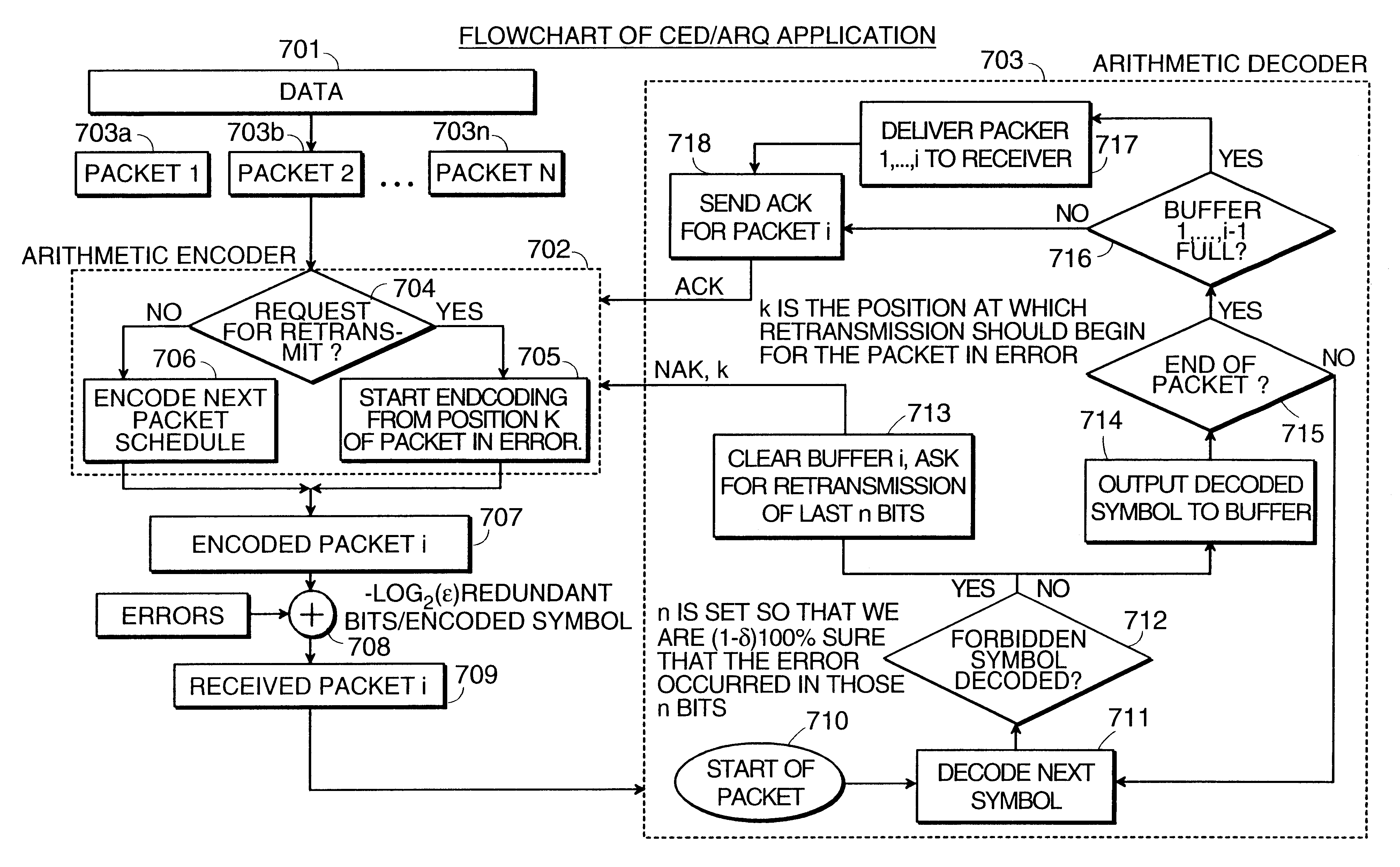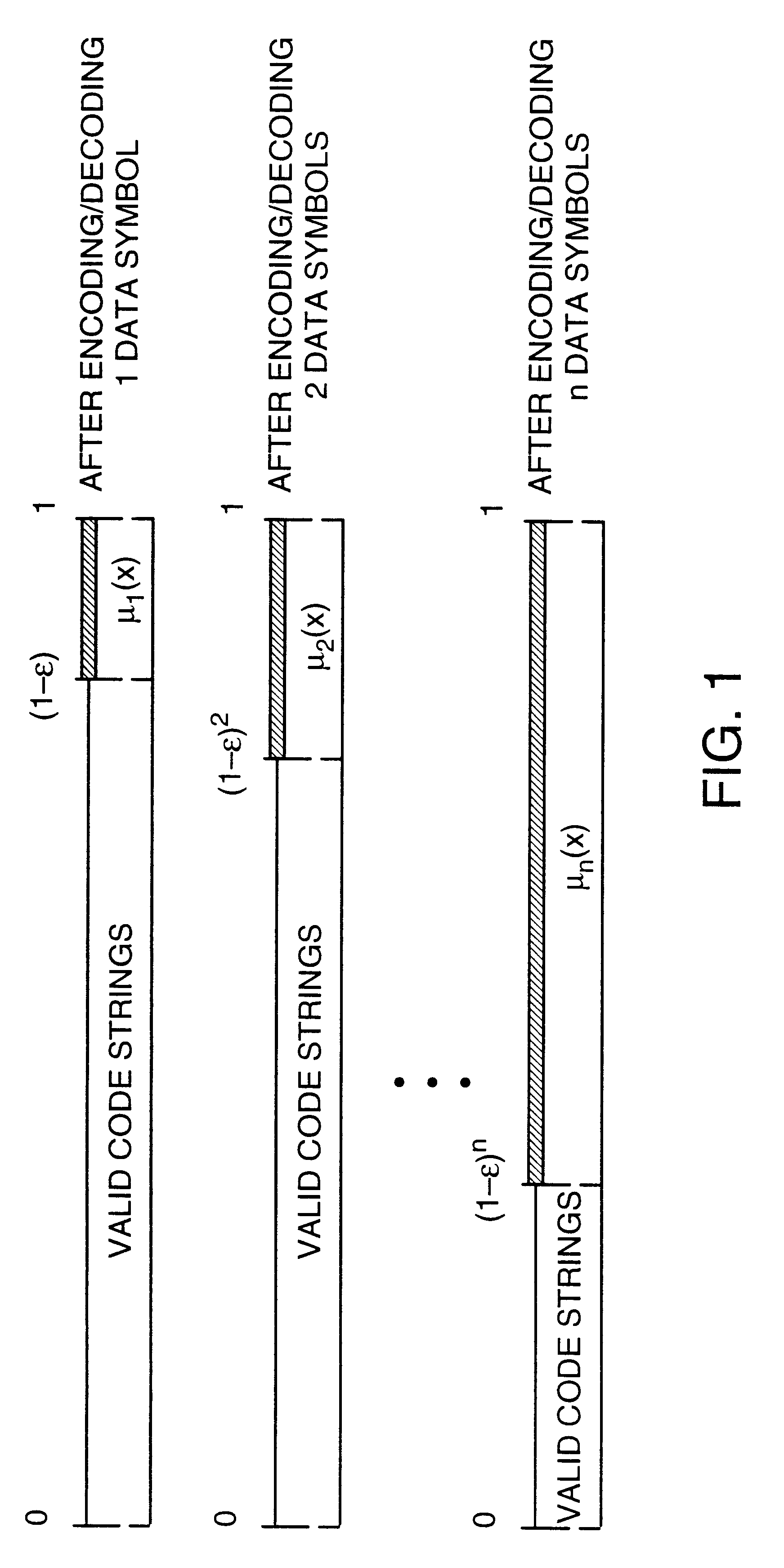Data transmission using arithmetic coding based continuous error detection
a technology of arithmetic coding and data transmission, applied in the field of data transmission, can solve the problems of communication error, inability to detect errors, and time loss,
- Summary
- Abstract
- Description
- Claims
- Application Information
AI Technical Summary
Problems solved by technology
Method used
Image
Examples
Embodiment Construction
Use of Arithmetic Coder for Error Control: Continuous Error Detection
An error in an arithmetically coded stream causes a loss of synchronization, causing all resulting symbols that are decoded to become useless. It is this loss of synchronization that the invention chooses to exploit to give error detection capabilities. Encoding and decoding via the arithmetic coder are done by repetitively partitioning subintervals within the unit interval 0,1 according to the probabilities of the data symbols. The method of the invention introduces a forbidden symbol that is never intended to be encoded by the arithmetic coder, but nonetheless is assigned a nonzero probability; then by decoding, if an error occurs, this forbidden symbol is almost surely likely to be eventually decoded. This invention uses the fact that if the forbidden symbol is decoded, this guarantees that an error has surely occurred. The amount of time needed to decode the forbidden symbol after the occurrence of an error is ...
PUM
 Login to View More
Login to View More Abstract
Description
Claims
Application Information
 Login to View More
Login to View More - R&D
- Intellectual Property
- Life Sciences
- Materials
- Tech Scout
- Unparalleled Data Quality
- Higher Quality Content
- 60% Fewer Hallucinations
Browse by: Latest US Patents, China's latest patents, Technical Efficacy Thesaurus, Application Domain, Technology Topic, Popular Technical Reports.
© 2025 PatSnap. All rights reserved.Legal|Privacy policy|Modern Slavery Act Transparency Statement|Sitemap|About US| Contact US: help@patsnap.com



